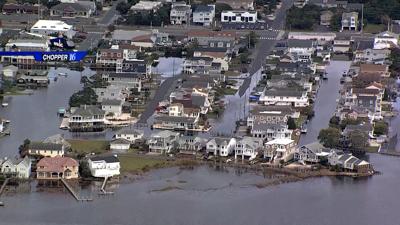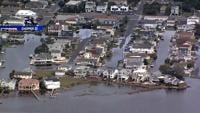FENWICK ISLAND, Del. -- On Thursday, the Fenwick Island Infrastructure Committee held a Bayside Flooding and Resiliency information and discussion session with the community.
Flooding has long been an issue in Fenwick Island and one that many residents say is only getting more intense.
Fenwick Island Infrastructure Committee member Tim Leahy says the town contracted engineering firm AECOM to summarize all of the previous sea-level rise and flooding studies carried out in the town and to map out both current and future flood data. The firm rendered maps showing where flooding is expected to occur in Fenwick from 2030 to 2090 if the issue is not addressed.
"We've been aware of the rising seas around us, and this particular study was the most detailed we've done, and the most updated from an engineering firm using the most current data we have and the most current models," says Leahy. "So it was important to update those models as we try to make plans for the next sixty years."
Leahy says Thursday's meeting was less about solutions and more about hearing residents' questions and concerns.
Neighbor William Biddle lives on W. Bayard St. and says he sees it flood more frequently and unpredictably. He thinks the town should raise its bulkheads as a short term solution.
"The bulkheads are too low at the end of the streets," says Biddle. "So that's a town problem, a town issue. Another thing, and this is a long range, maybe 10 or 15 years, they need to pass an ordinance mandating that any new bulkheads that are put in have to be higher."
Neighbor Renee Young says she's noticed the worsening flooding over the last 55 years. She says isn't sure about what's the most cost efficient solution, but says Thursday's meeting was a start.
"This has been going on a long time," says Young. "The solution is long overdue, but at least it's more obvious now. People are talking about it more. People are starting to push back."
The Infrastructure Committee says they plan to continue meeting with the community and discussing the issue. Town leaders say they are trying to work with the state to plan potential solutions and looking for funding opportunities through state grants.



